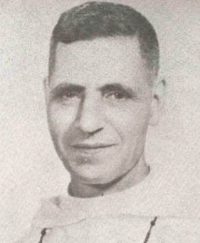A day of conflagration. Yesterday, some of the big gasoline depots started burning. At first the gasoline was being emptied into the Pasig River. But accidentally—or intentionally—the gasoline caught fire, setting the river and the esteros aflame. The houses situated along the river and the esteros particularly in the Pandacan district were the first victims of this ill-planned sabotage.
For the last 48 hours, a gigantic column of smoke has been spouting, very black in the daytime and very luminous at night. Officially, these fires are a proof that Manila has become indeed an open city with no military installations. The general belief was that the gasoline stocks were burned to prevent them from falling into enemy hands.
The Japanese forces are advancing, without opposition. They are about a hundred kilometers north and south of Manila. Although the newspapers do not admit the impotence of the USAFFE to stop the Japanese advance, one can see that the only resistance offered are some strategic retreats. All the soldiers who had returned from the front and those who have been waiting to be called for the last few weeks—are sent to Pampanga. But the invaders are already in Nueva Ecija and have in fact reached Cabanatuan.
The Japanese success is attributed not only to the numerical superiority, but also to their plan of flanking and attacking the most unexpected and most vulnerable places. The American strategy consists in fortifying the Manila Bay and the Batangas Bay simply because they thought that the Japanese would land there. The Japanese, however, landed in La Union and Tayabas and, evading the fortified areas, reached Manila without encountering much resistance.
This afternoon I went to San Juan del Monte. While I was there, Dr. Domingo Fernández called up from the Manila Gas. He wanted to inform me that they were planning to set on fire the huge gasoline deposits in Pandacan.
I ran to notify the Sisters of Santa Catalina. “Don’t get frightened, Sisters,” I began telling them. “There will be a…”
Boom! Boom! As I was talking, the explosions shook the house and the glasses as if there was an earthquake of a major intensity. Immediately, gigantic columns of smoke started to rise and the fire spread to the nearby houses and factories.
I returned to San Sebastian. From its high steeples I could see how most of the city and its environs were burning. The piers, the customs area, the army camps, the Military Hospital of Sternberg, the ice factory, the whole district of Pandacan and many other places were a virtual inferno.
Terror was painted in every face. Last day of the year 1941.
